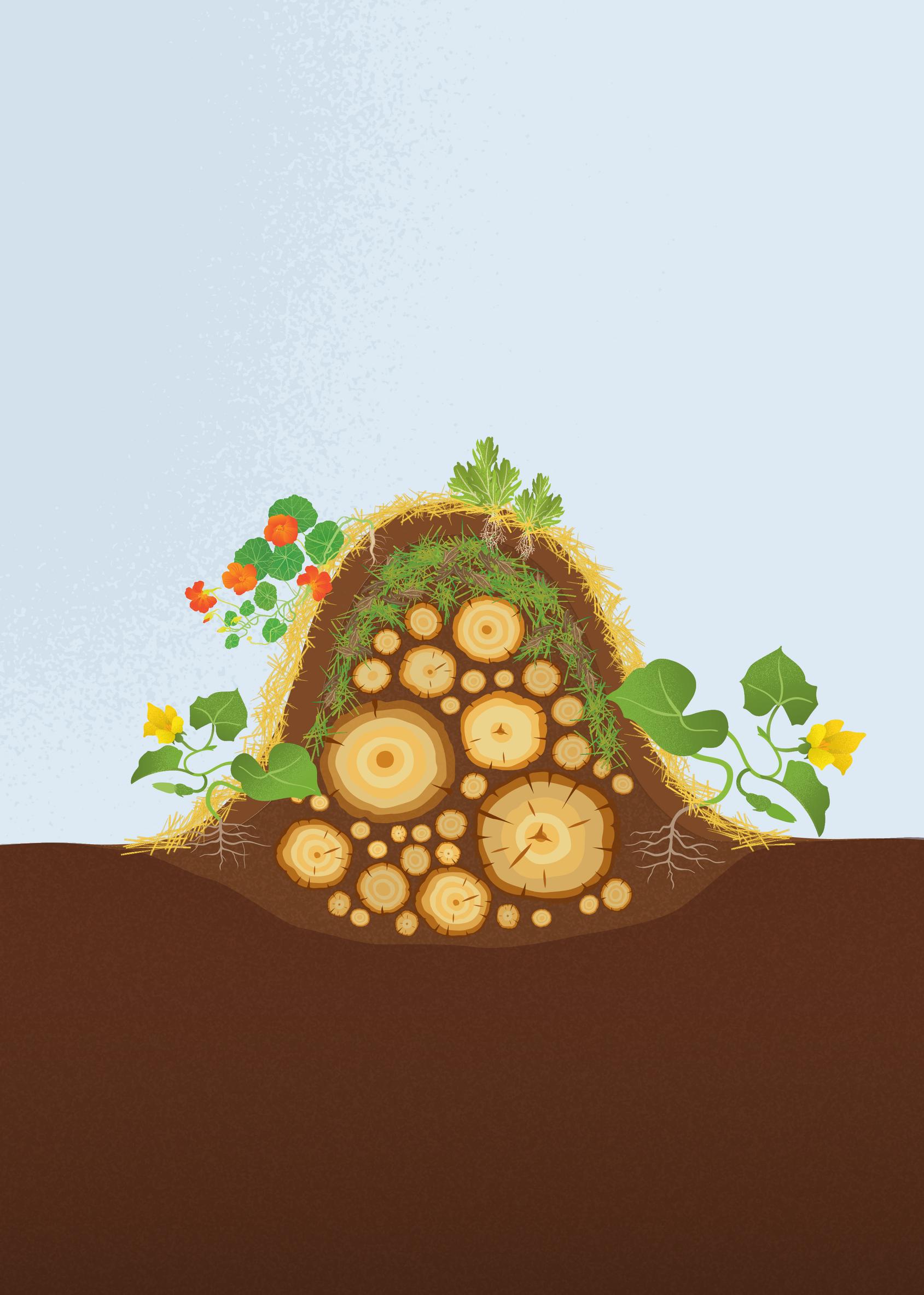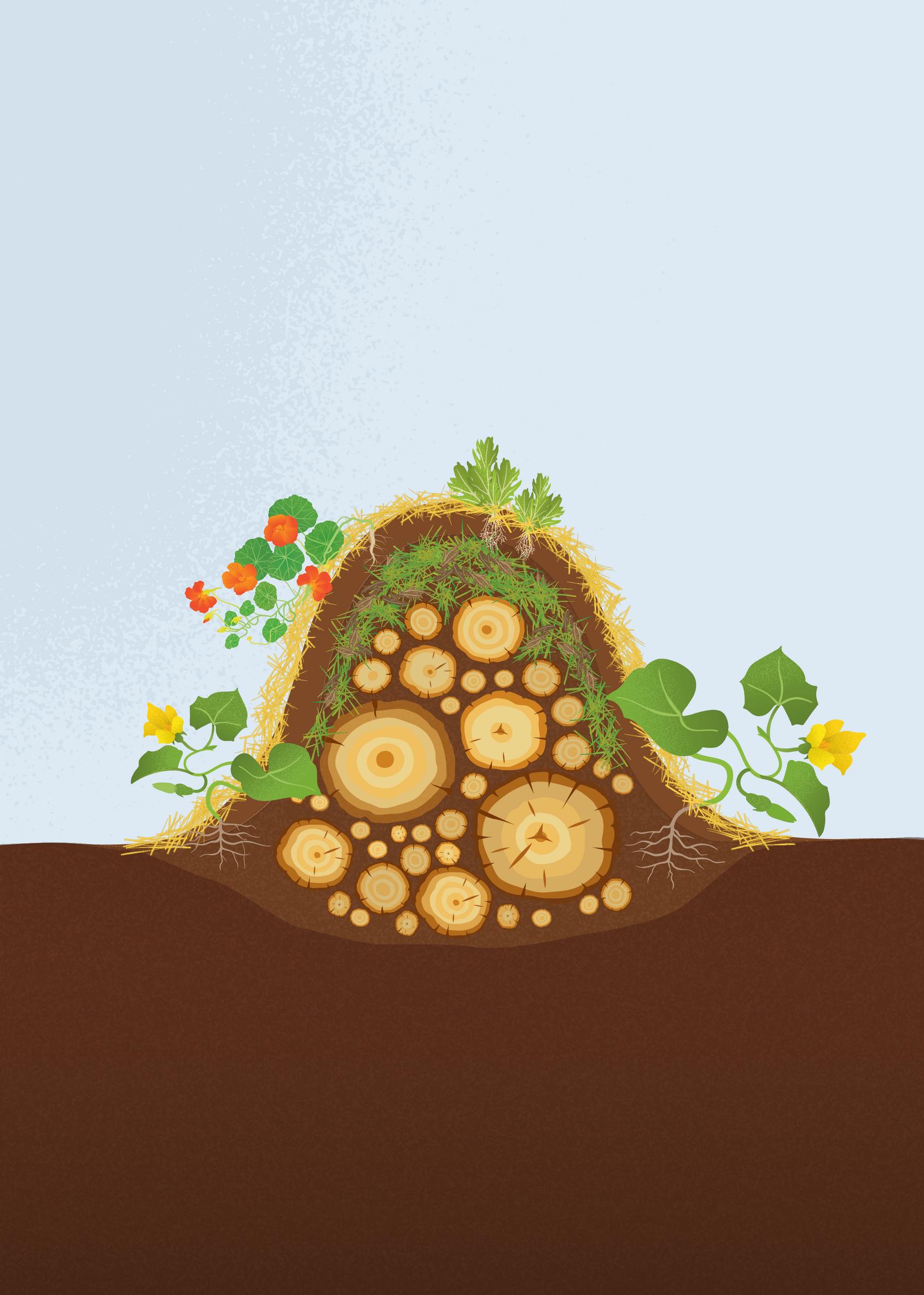
Hügelkultur: the Germans’ stroke of genius for your garden—build your own hügel bed
Hügelkultur, also known as mound gardening, offers outstanding growing conditions for both vegetables and ornamental plants. You can build a hügel bed when the ground isn’t frozen, but it’s easiest in autumn when there are plenty of fallen leaves and other materials. That way, your raised garden bed is ready for immediate use as soon as spring arrives.
What is a hügelkultur?
Hügelkultur, originally developed in Germany and sometimes called mound gardening, uses a variety of garden materials, from leaves and twigs to stumps and tree trunks. As the organic matter decomposes, nutrients are released gradually for plants to absorb. A tall hügel bed supplies a sunny spot, protection from the wind, and warm, favorable conditions for roots. This method is suitable for both annual and perennial plants.

How to build a hügel bed
1. Dig a pit or a trench
Start by removing soil to a depth of roughly 0.2–1 meter. As you dig, separate the soil and sod into different piles. Place branches, trunks, and other wood at the bottom. If you use fast-decomposing materials such as leaves and small branches, the bed will be ready for planting and sowing sooner but will also settle more quickly. Sturdier wood decomposes at a slower pace, so the best growing conditions often develop after a few years.
2. Build it in layers
Spread whatever plant matter is available, such as leaves or upside-down sod, on top of the branches and trunks. Then shovel on a layer of topsoil, followed by an organic mulch like grass clippings, straw, or a mat of sheep’s wool.
3. Plant your crops
Begin with low-maintenance annuals, from flowers to herbs and veggies. Once the mound settles and conditions improve, perennial plants will also thrive there. As the bed continues to settle over time, you can either rebuild it from scratch or place additional branches and leaves inside it.
How big should the mound be?
A raised garden bed is typically 1.5–2 meters wide and about a meter tall, though these measurements can vary based on available space and materials. You can enlarge or extend the bed over time. The sides of the mound should be at least 45 degrees, which allows enough oxygen for the organic matter to decompose properly.
Sources and further information: richsoil.com/hugelkultur, seppholzer.info, and pohjoinenpermakulttuuri.wordpress.com.


